Ficus Fusion project
I have recently assembled another fusion project, but this time it is a Ficus Microcarpa var. Hillii. I used an old dead trunk from a Murraya Paniculata that I had lying around and instead of twist ties for my attaching method, thought I would try something new….hence the wood base. I used a brad gun, which fires inch long pins normally used for small woodwork items. It worked a treat, particularly when I needed the ficus whips to mould into certain shapes. Very easy to handle and once the base was secured to a bench, managed to attach around 40 whips from a quarter inch to half an inch in diameter in a little over 2 hours. Growing on a batch of trident seedlings from last year which will get the same treatment. Update pics to come.

September 16th 2013
Notice how the gap in front has closed considerably. I thought I left plenty of room for a Hollow trunk appearance. This may close completely by the looks of this.
Update pics as of 4/1/13
September 19th 2013 UPDATE
This fusion project has been putting on a ton of new growth for being in a pot and not the ground. I have also had the pot sitting in a deep tray of water full time which it certainly seems to like. As far as fusion of the trunks goes… well they have all fattened by at least 20-30% since the day of assembly, and some fusion has taken place, but still a ways to go. Normally I would just let the trunks grow taller and taller, but I have found with this variety of ficus, that they get very tall but with little taper, so I am shortening the trunks back to around finished height, and will let the side branching go unpruned, as fusion has occurred where the lower branches were allowed to thicken. Lots of chicken manure and Powerfeed over the coming months for this one…. stay tuned for more updates.
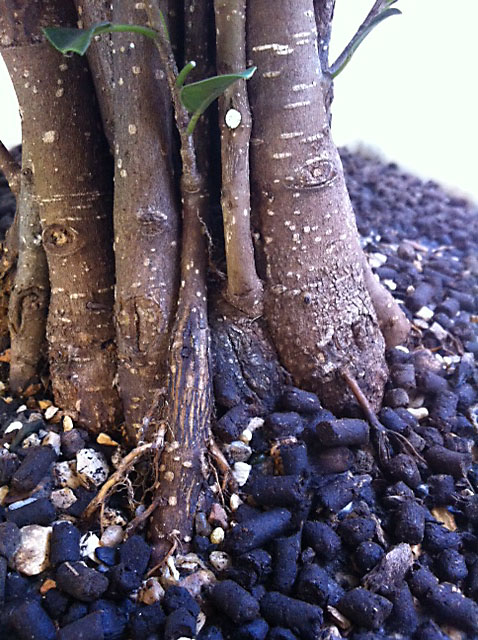
Cuttings from this fusion project, specifically for situations like this where gaps need filling due to some original trees dying.
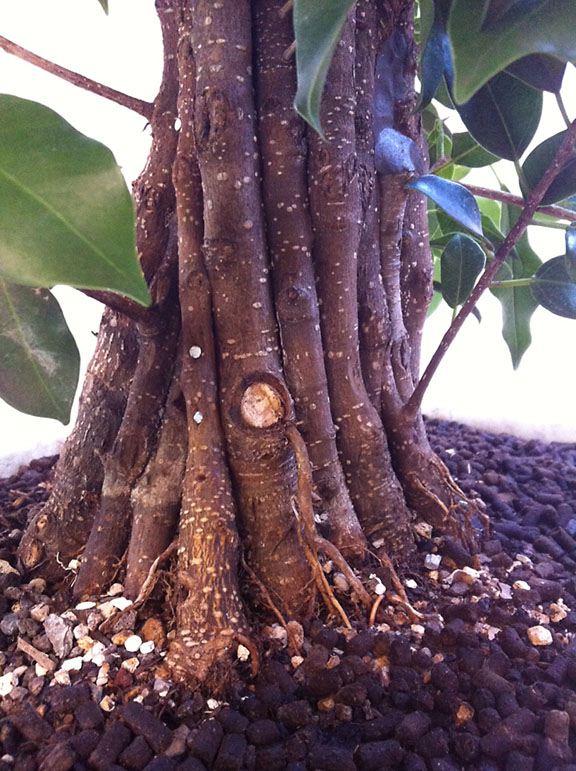
Lower thickened branch removed to stop this original whip getting too thick. Must keep a balance of strength where possible.
DECEMBER 14th 2013
Being the start of summer down here, its the perfect time to work on ficus, so today I decided to defoliate my Ficus Fusion project, to see just what was going on under all those healthy leaves.
There is some definite fusing going on but I can’t say it is fully welding together just yet. I really believe had I planted this in the ground or a big grow box, I would be seeing quicker results…. but hindsight is a wonderful thing isn’t it.
An interesting thing to note also is for the period up to the repot, the pot it was in sat permanently in about 4 inches or 10cms of water, and the whole thing powered…. what is also interesting is this variety of fig is remarkably drought tolerant. I have cuttings from this project which have gone a couple of weeks without a drink and not the slightest signs of stress. Tough variety this one.
I underestimated the swelling of all the whips combined, when leaving an open space for the eventual hollowed trunk look to the finished tree. I wouldn’t be surprised if by the time these are all welded together, the opening will have all but fully closed. Oh well, at least I know what lies beneath, in case I choose to carve a new opening down the track.

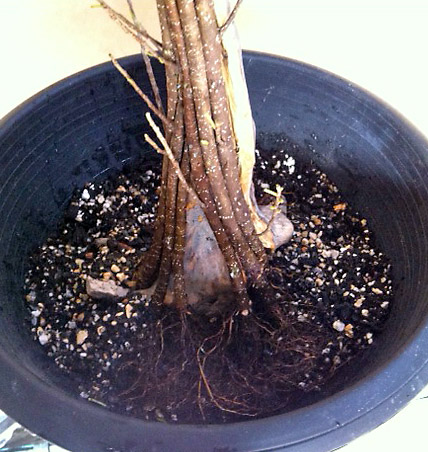
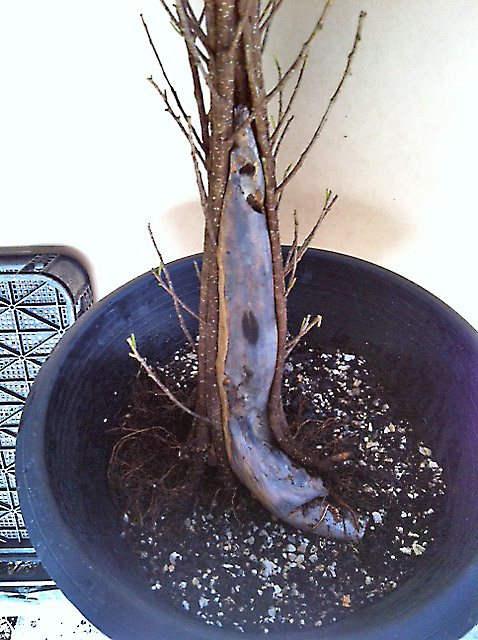
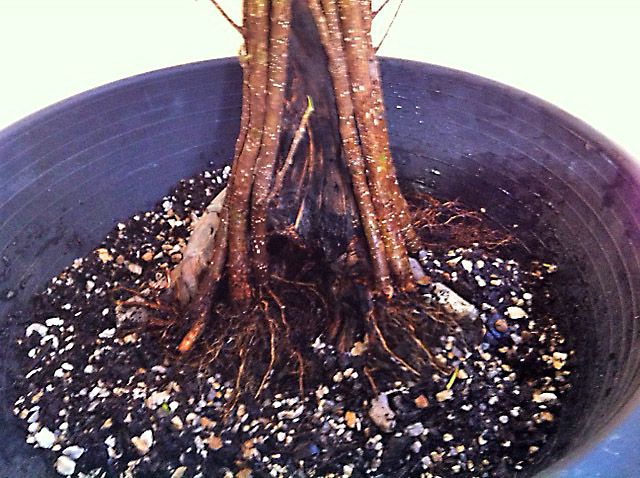
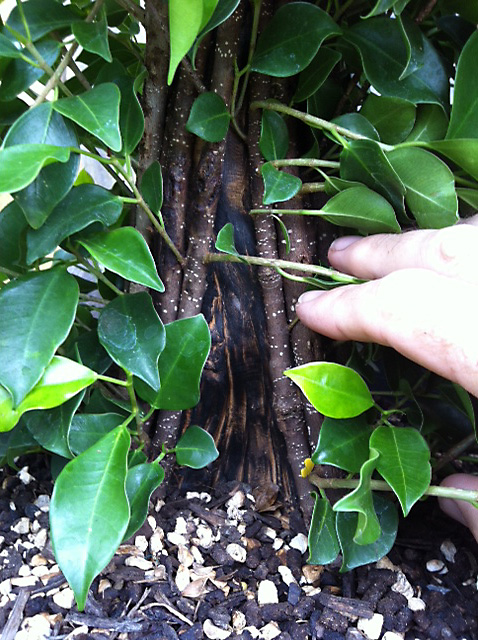
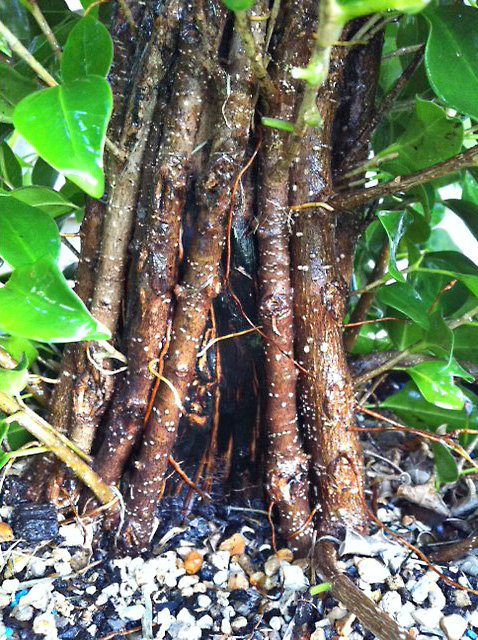
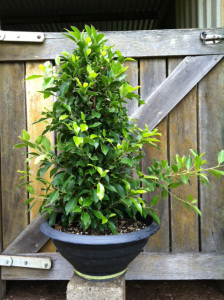
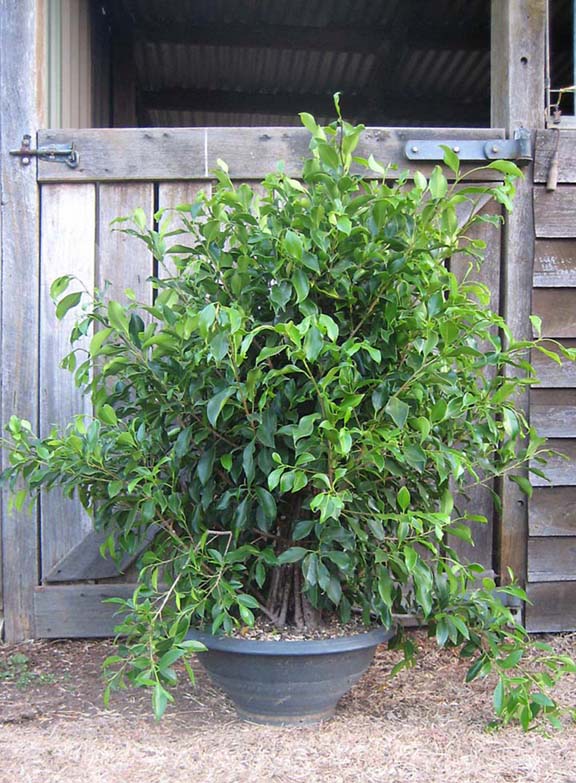
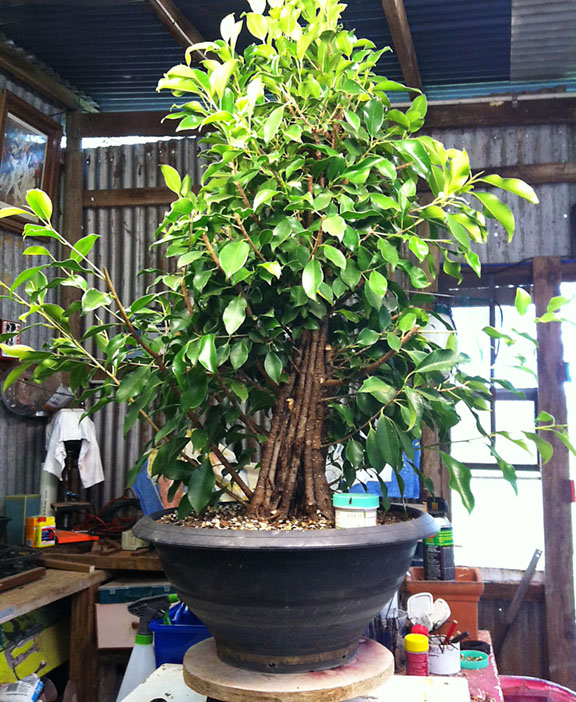
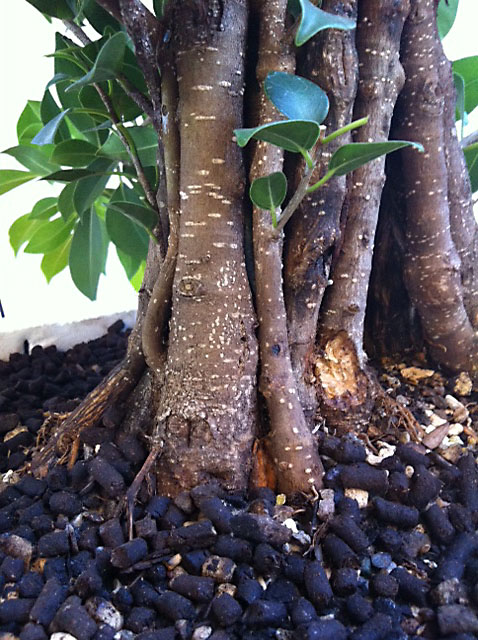
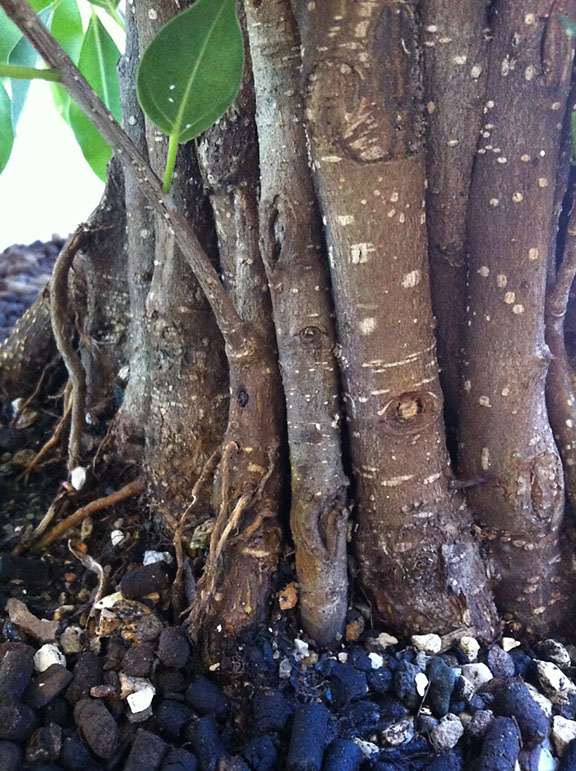
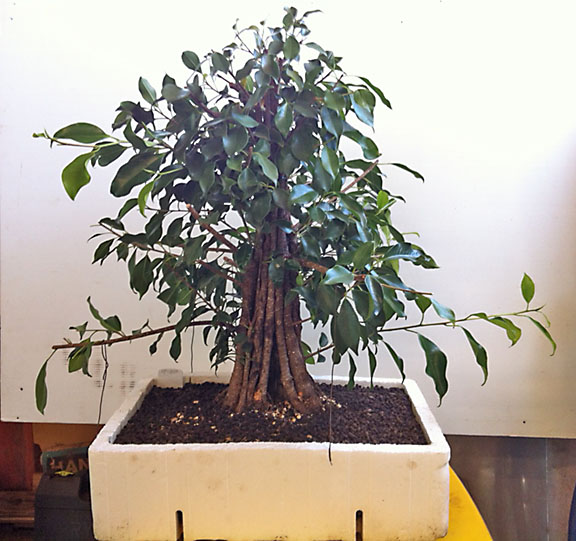
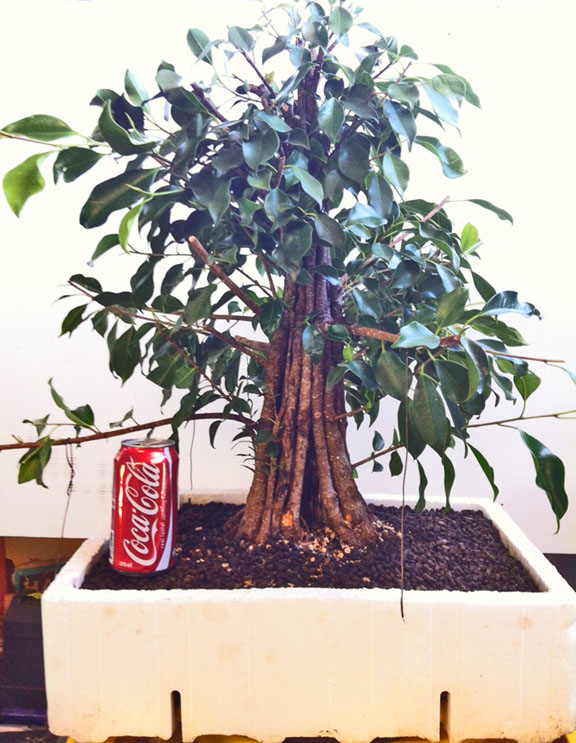
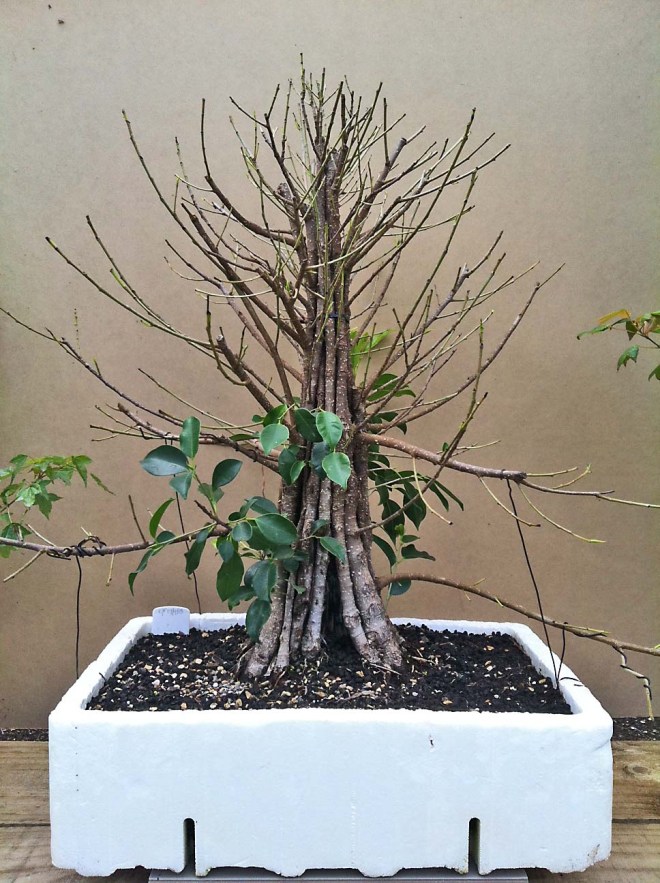
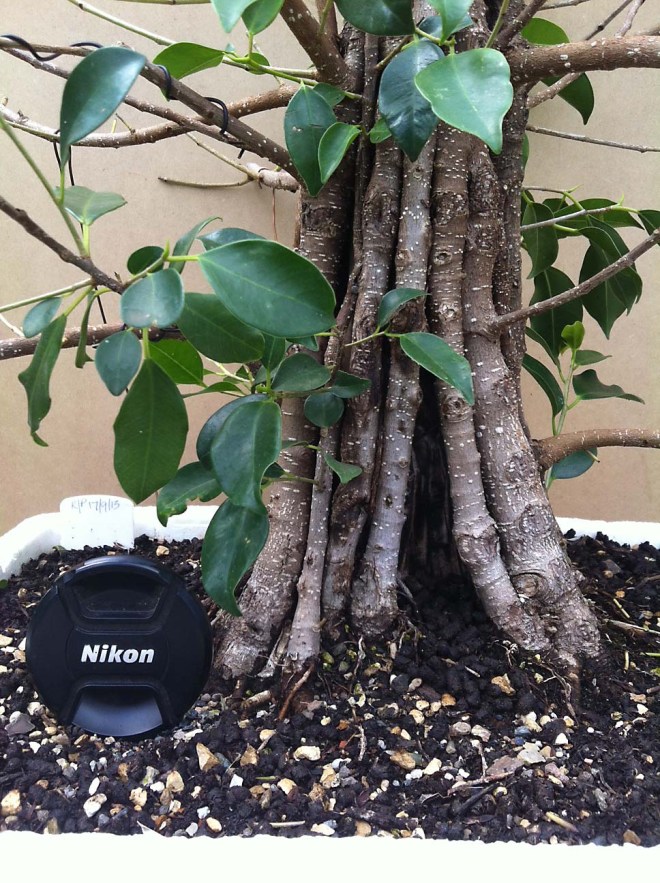
This looks great, and I’m intrigued by using the brad nail gun. I’ve done the twist-tied-seedlings-around-a-wire-frame method and the plastic grafting tape method, but not this. I think Doug Philips (dugzbonsai.com) used nails or screws in his first examples.
I’d imagine it’s much easier to assemble using this method–the twist ties are onerous, and the wrap method doesn’t allow the same complex shaping. Now if I could find an equilateral-shaped “donor” trunk to give some good taper …
I’ll update my site one of these months–have had good growth and fusion this past year on my maple.
Hi John
I’ve looked at all those attachment methods used by others playing around with this technique, and agree with you completely… The brad gun worked a treat when assembling this fig fusion due to the inherant ficus bark texture. Maple bark is a bit more brittle for the want of a better word and possibly more likely to split finer whips. I have used it with success on trident approach grafts and Chinese Elm. The softer bark on the elms and ficus seem to accept the brads without issue. Carving wooden bases are the only hassle but I’ve got a couple of these on the go at the moment and have used some deceased bonsai as the base for future fusion projects.
Hi Shane,
I just took one step closer to mimicking your methodology. I found a suitable solid wood cone after searching for a while (though I suppose I could’ve tried to make one), and am now going to propagate more microcarpa so I can get the project going in the spring (in the US).
Details: http://frankenbonsai.wordpress.com/2013/12/21/new-year-new-method/
Best,
John
Good stuff John. The technique just seemed natural to me as I just never seem to have enough hands, so the brad gun makes very quick decisive work of it.
Reblogged this on Bonsai advice and commented:
Good idea for creating large fig trunk from small cuttings.
Pingback: New Year, New Method | frankenbonsai
Shane,
Quick question–did any thinner ficus die above where you “shot” the brads in their trunks? I have a decent number of thinner rooted cuttings to use, and I’m not sure if I should let them fatten up first.
Thanks,
John
Hi John, Out of the original 40 whips, only about 6 or so died. Not really sure why and can’t for certain rule out the after effect of the Brad gun nail, but I wouldn’t think it to be the cause with so many not being affected. I wouldn’t use the gun on anything less than 5mm thick though…. it will just split and this leaves it susceptible to disease.